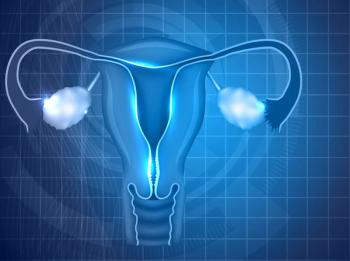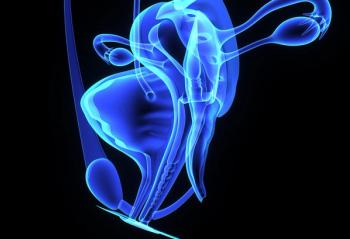
Oncology NEWS International
- Oncology NEWS International Vol 6 No 4
- Volume 6
- Issue 4
Myoepithelial Cells May Be Key to Suppression of DCIS Growth
LOS ANGELES--Laboratory studies from the UCLA School of Medicine point to a role for myoepithelial cells in suppressing breast cancer invasion, said researcher Mark Sternlicht, PhD. Myo-epithelial cells lie between the epithelium and the basement membrane. They synthesize and maintain the basement membrane and can promote epithelial differentiation. They are found surrounding benign and nonmalignant lesions.
LOS ANGELES--Laboratory studies from the UCLA School of Medicine pointto a role for myoepithelial cells in suppressing breast cancer invasion,said researcher Mark Sternlicht, PhD. Myo-epithelial cells lie betweenthe epithelium and the basement membrane. They synthesize and maintainthe basement membrane and can promote epithelial differentiation. Theyare found surrounding benign and nonmalignant lesions.
"Myoepithelial cells rarely transform," Dr. Sternlicht saidat the San Antonio Breast Cancer Symposium. "And when they do, theytransform to benignity or low-grade neoplasms that do not invade and donot metastasize."
Surrogates Developed
Researchers at the UCLA laboratory, under the direction of Dr. SanfordBarsky, have developed cell lines and transplantable xenografts from benignmyoepithe-lial tumors to serve as a surrogate to study the effects of myoepithelialcells on breast cancer invasion.
"These myoepithelial tumors are slow growing; it takes six monthsof nude mouse growth to reach about 1.5 cm in diameter," Dr. Sternlichtsaid. He noted that these tumors make an abundant extracellular matrix,composed of a number of basement membrane and non-basement membrane molecules.
More importantly, he said, myoepithe-lial cells express high levelsof proteinase inhibitors and angiogenic inhibitors, and very low levelsof proteinase and no angiogenic-stimulating factors. Many of these proteinaseand angiogenic inhibitors can be seen selectively in tissue sections ofductal carcinoma in situ (DCIS) in the surrounding myoepithelial layer.
One of the myoepithelial cell lines, HMS1, has been shown in vitro todramatically inhibit tumor invasion and angiogenesis (endothelial cellmigration and mitogenesis). The UCLA work further suggests that the anti-invasiveeffect is mediated in part through maspin, a member of the serpin superfamilyof proteinase inhibitors, while the angiogenic inhibition is mediated primarilythrough thrombospondin-1.
With all of this evidence for the "myoepithelial defense,"Dr. Sternlicht hypothesizes that DCIS is regulated by the paracrine interactionof the myoepi-thelial cells and "this is why DCIS stays confined forso many years and why there is no demonstrable genetic alteration betweenDCIS and invasive cancer."
Articles in this issue
over 28 years ago
Mucin Markers May Play Role in Finding Breast Cancer Recurrencesover 28 years ago
Some Breast Cancer Patients May Not Need Node Dissectionover 28 years ago
Irinotecan Easier to Give as Physicians Gain Experienceover 28 years ago
Guidelines Highlight Staging Technologies For Pancreatic Cancerover 28 years ago
Lumpectomy Alone Appears to Be Safe In DCIS Patientsover 28 years ago
Multimodality Treatment Appears Safe for Pregnant Womenover 28 years ago
McGivney Outlines 'Ambitious Agenda' For NCCN in 7 Areasover 28 years ago
Capecitabine Studied In Advanced Colon Cancerover 28 years ago
When Antiandrogens Work, Patients Have Normal Quality of LifeNewsletter
Stay up to date on recent advances in the multidisciplinary approach to cancer.

















































































